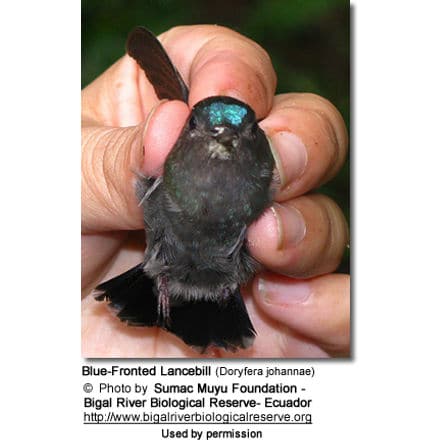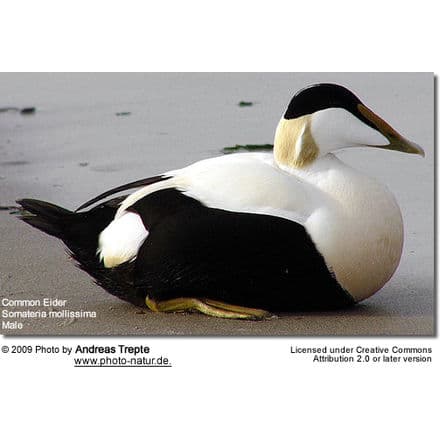Blue-fronted Lancebills
The Blue-fronted Lancebills (Doryfera johannae) is a South American hummingbird that is generally uncommon throughout its range, but due to its very large range, this species is not currently considered endangered.
Distribution / Range
The Blue-fronted Lancebill is found in the following South American countries: Brazil, Colombia, Ecuador, Guyana, Peru and Venezuela.
They occur at elevations of 1,300 – 5,200 ft (400 – 1600 m) at the eastern base of the eastern Andes ranging from eastern Cundinamarca (Rio Guatiguia) and western Meta (Villavicencio, Pico Renjifo in Macarena Mountains). South to eastern Colombia and southeastern Peru. Also found in the Tepuis of Guyana, southeastern Venezuela, and adjacent northern Brazil in Roraima.
The related Green-fronted Lancebill occurs at higher elevations – namely from 4,600 ft – to 8,800 ft (1,400 – 2,700 m).
They are usually seen alone and low at forest openings or thicket borders.

Subspecies and Distribution
Doryfera johannae johannae (Bourcier, 1847) – Nominate Race
- Found along the eastern slope of the east Andes from central-eastern Colombia to northeastern Peru.
Doryfera johannae guianensis (Boucard, 1893)
Found in south Guyana, southern Venezuela, and tepuis of adjacent northern Brazil.
Hummingbird Resources
- Hummingbird Information
- Hummingbird Amazing Facts
- Attracting Hummingbirds to Your Garden
- Hummingbird Species
- Feeding Hummingbirds
Alternate (Global) Names
Spanish: Colibrí Picolanza Menor …Portuguese: Bico-de-lança or Bico-de-lança-de-testa-azul … French: Porte-lance de Jeanne … Italian: Beccodilancia fronteblu … German: Blaustirn-Lanzettschnabel … Czech: kolib?ík modro?elý … Danish: Blå Lansenæb … Finnish: … metsäpistinkolibri … Japanese: sumirehitaiyarihachidori … Dutch: Blauwvoorhoofd-lancetkolibrie … Norwegian: Blåpannelansenebb … Polish: wlócznik modroczelny … Slovak: jagavicka modrocelá … Swedish: Blåbröstad lansnäbb
Description
Blue-fronted Lancebills are about 8.6 cm or 3.4 inches long, including their 1.0 – 1.2″ or 25-30 mm long, slender, black, and straight bill and the rounded steely blue-black tail.
The plumage looks generally dark, except for the glossy blue-violet forecrown of the male or the shining blue-green forehead of the female. The upper plumage is dark bronzy green with a bluish-green-tinged rump. The underplumage is dark green to bluish-black. The undertail feathers are tinged bluish.
The female is paler than the male and with a shining blue-green forehead. Her under plumage is greyish-green. She has grey-tipped outer tail feathers.
Similar species: They resemble the related Green-fronted Lancebill, but are generally smaller. The males are much darker with a violet frontlet compared to the green frontlet of the Green-fronted Lancebill.
The females can be distinguished from the female Green-fronted Lancebill by her smaller size, shorter bill, and dull (no coppery) rearcrown.
The Blue-fronted Lancebill occurs at lower elevations than the Green-fronted Lancebill.
Voice / Vocalizations
They make high-chittering calls while perched or flying. They also make quiet click-clack sounds in flight.




